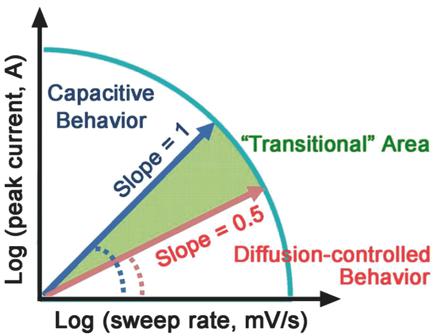Our official English website, www.x-mol.net, welcomes your feedback! (Note: you will need to create a separate account there.)
Advanced Energy Storage Devices: Basic Principles, Analytical Methods, and Rational Materials Design
Advanced Science ( IF 15.1 ) Pub Date : 2017-11-15 , DOI: 10.1002/advs.201700322 Jilei Liu 1 , Jin Wang 1 , Chaohe Xu 2 , Hao Jiang 3 , Chunzhong Li 3 , Lili Zhang 4 , Jianyi Lin 5 , Ze Xiang Shen 1
Advanced Science ( IF 15.1 ) Pub Date : 2017-11-15 , DOI: 10.1002/advs.201700322 Jilei Liu 1 , Jin Wang 1 , Chaohe Xu 2 , Hao Jiang 3 , Chunzhong Li 3 , Lili Zhang 4 , Jianyi Lin 5 , Ze Xiang Shen 1
Affiliation

|
Tremendous efforts have been dedicated into the development of high‐performance energy storage devices with nanoscale design and hybrid approaches. The boundary between the electrochemical capacitors and batteries becomes less distinctive. The same material may display capacitive or battery‐like behavior depending on the electrode design and the charge storage guest ions. Therefore, the underlying mechanisms and the electrochemical processes occurring upon charge storage may be confusing for researchers who are new to the field as well as some of the chemists and material scientists already in the field. This review provides fundamentals of the similarities and differences between electrochemical capacitors and batteries from kinetic and material point of view. Basic techniques and analysis methods to distinguish the capacitive and battery‐like behavior are discussed. Furthermore, guidelines for material selection, the state‐of‐the‐art materials, and the electrode design rules to advanced electrode are proposed.
中文翻译:

先进储能器件:基本原理、分析方法和合理的材料设计
人们付出了巨大的努力来开发具有纳米级设计和混合方法的高性能储能设备。电化学电容器和电池之间的界限变得不那么明显。根据电极设计和电荷存储客体离子,相同的材料可能会表现出电容性或类似电池的行为。因此,电荷存储时发生的基本机制和电化学过程可能会让刚进入该领域的研究人员以及一些已经进入该领域的化学家和材料科学家感到困惑。这篇综述从动力学和材料的角度提供了电化学电容器和电池之间异同的基础知识。讨论了区分电容性行为和类电池行为的基本技术和分析方法。此外,还提出了材料选择指南、最先进的材料以及先进电极的电极设计规则。
更新日期:2017-11-15
中文翻译:

先进储能器件:基本原理、分析方法和合理的材料设计
人们付出了巨大的努力来开发具有纳米级设计和混合方法的高性能储能设备。电化学电容器和电池之间的界限变得不那么明显。根据电极设计和电荷存储客体离子,相同的材料可能会表现出电容性或类似电池的行为。因此,电荷存储时发生的基本机制和电化学过程可能会让刚进入该领域的研究人员以及一些已经进入该领域的化学家和材料科学家感到困惑。这篇综述从动力学和材料的角度提供了电化学电容器和电池之间异同的基础知识。讨论了区分电容性行为和类电池行为的基本技术和分析方法。此外,还提出了材料选择指南、最先进的材料以及先进电极的电极设计规则。

























 京公网安备 11010802027423号
京公网安备 11010802027423号